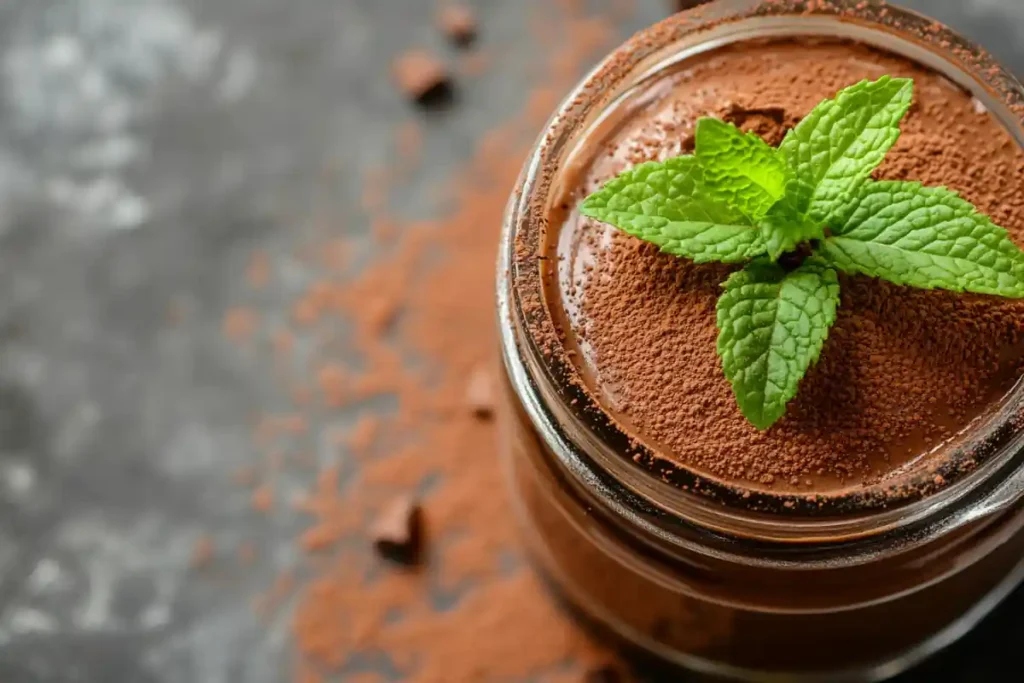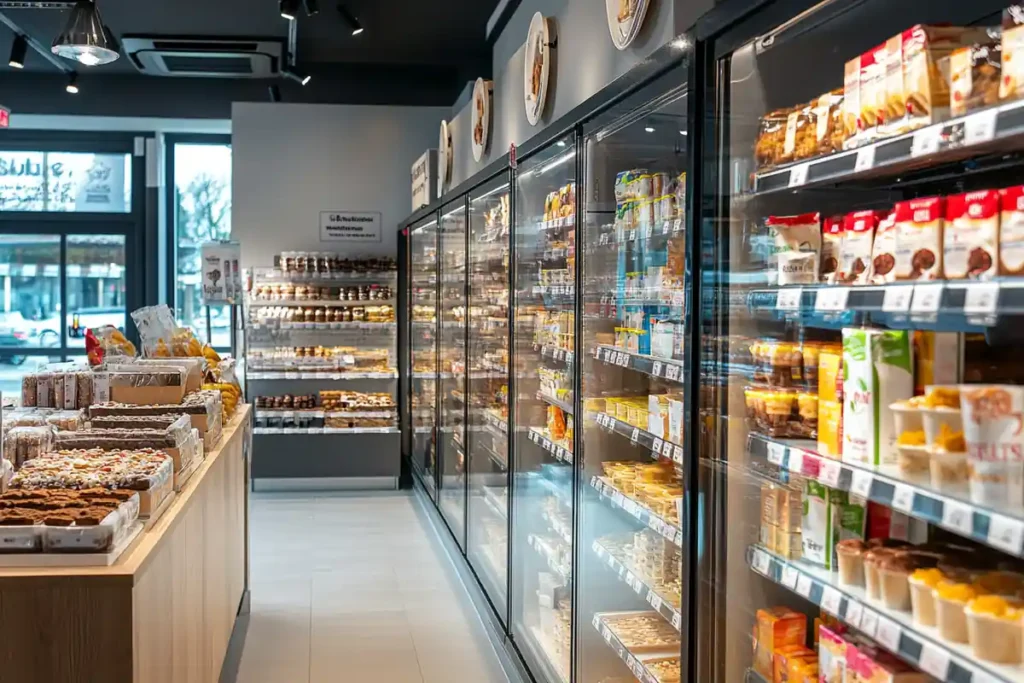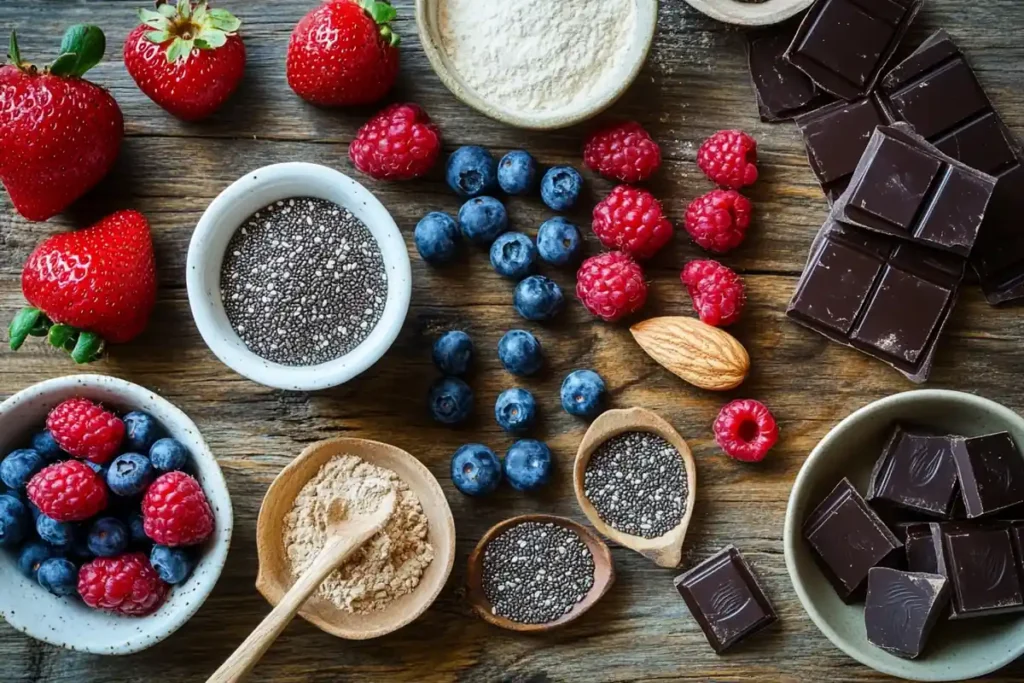What desserts can diabetics eat in the UK? Managing diabetes while satisfying a sweet tooth might sound like walking a tightrope, yet it doesn’t have to be! With the right knowledge and choices, enjoying desserts can still be part of a healthy lifestyle. In this article, we’ll explore a variety of diabetic-friendly desserts available in the UK, ranging from homemade treats to store-bought delights. Furthermore, you’ll learn how to make healthier choices, discover the best ingredients to use, and even find out where to purchase desserts that won’t wreak havoc on your blood sugar levels. So, let’s dive in and uncover how diabetics can still enjoy their desserts responsibly!
Introduction and Overview
Why Dessert Can Be Tricky for Diabetics
For diabetics, indulging in desserts often comes with a side of worry. The high sugar and carb content in traditional sweets can cause blood sugar spikes, leading to complications. However, that doesn’t mean giving up on dessert entirely—it’s about being informed and choosing wisely.
A Growing Market for Diabetic-Friendly Desserts in the UK
Thankfully, as awareness of diabetes and its dietary challenges continues to grow, the UK has seen a significant rise in options for low-sugar desserts and sugar-free recipes. In fact, from innovative bakeries to clever home chefs, there are now plenty of ways to enjoy a sweet treat while still prioritizing your health. Moreover, these options ensure that diabetics can indulge without feeling like they’re sacrificing their well-being.
What This Article Covers
In the following sections, we’ll break down:
- Key factors to consider when choosing diabetic desserts.
- Delicious recipes you can make at home.
- UK supermarkets and cafes offering diabetic-friendly desserts.
- Tips for keeping desserts both tasty and safe for diabetics.
By the end, you’ll be equipped with all the knowledge you need to indulge in desserts responsibly while keeping your health in check.
Understanding Diabetes and Desserts
What Does It Mean to Be Diabetic?
Diabetes is a condition that affects how your body processes sugar, or glucose, which is a primary energy source. There are two main types:
- Type 1 Diabetes: An autoimmune condition where the body doesn’t produce insulin.
- Type 2 Diabetes: Often linked to lifestyle factors, this type occurs when the body doesn’t use insulin effectively.
For both types, managing blood sugar levels is crucial, and food choices—especially desserts—play a big role in achieving this balance.
Why Are Desserts Challenging for Diabetics?
Desserts can be a real stumbling block for diabetics because they’re usually high in refined sugars and carbohydrates. These ingredients rapidly raise blood sugar levels, causing spikes that can lead to complications over time.
Additionally, many traditional desserts lack the dietary fiber or protein needed to slow sugar absorption. This combination makes desserts a tricky addition to a diabetic’s meal plan—but not an impossible one.
The Role of Artificial and Natural Sweeteners
Fortunately, modern sweeteners offer a ray of hope for diabetics. Options like stevia, erythritol, and monk fruit provide sweetness without causing a blood sugar rollercoaster. In the UK, artificial sweeteners such as sucralose and aspartame are also widely available, and they’ve made diabetic-friendly desserts more accessible.
Pro Tip:
For a dessert that won’t spike your blood sugar, look for options with a low glycemic index (GI). These foods are absorbed more slowly, keeping your glucose levels steady.
Key Considerations for Diabetic Desserts
Essential Nutritional Factors for Diabetic Desserts
When choosing or preparing diabetic-friendly desserts, paying attention to nutrition is key. Here’s what to keep in mind:
- Low Glycemic Index (GI): Desserts made with low-GI ingredients help prevent blood sugar spikes. Think whole grains, nuts, and certain fruits like berries.
- Balanced Macronutrients: Incorporate a mix of protein, healthy fats, and carbohydrates. This combination slows down digestion and minimizes glucose surges.
- Fiber-Rich Ingredients: Fiber helps manage blood sugar by reducing the speed of carbohydrate absorption. Add ingredients like chia seeds or oats to your desserts.
Sweeteners Suitable for Diabetics
Sweeteners are game-changers for diabetic desserts. Here’s a quick breakdown of the best options:
Natural Sweeteners
- Stevia: Plant-based and calorie-free, stevia is a top choice for diabetics. It’s up to 300 times sweeter than sugar, so you only need a little.
- Erythritol: This sugar alcohol has almost no calories or carbs, making it an excellent substitute in baking.
- Monk Fruit Extract: Known for its mild sweetness and zero impact on blood sugar, monk fruit is a rising star in diabetic-friendly desserts.
Artificial Sweeteners Approved in the UK
- Sucralose: Found in products like Splenda, it’s heat-stable and works well for baked goods.
- Aspartame: Common in sugar-free drinks and desserts, aspartame provides sweetness without calories.
Portion Control and Moderation
Even with diabetic-friendly ingredients, portion control remains essential. Eating too much of even a low-GI dessert can still raise blood sugar.
Quick Tips for Moderation:
- Stick to single-serve portions.
- Pair desserts with high-protein meals to buffer glucose spikes.
- Space desserts out during the week instead of indulging daily.
Pro Tip: According to Diabetes UK, spacing carbs evenly throughout the day helps manage glucose levels effectively.
Top Diabetic-Friendly Desserts in the UK
Homemade Desserts: Easy and Delicious

Making desserts at home allows you to control every ingredient, ensuring they’re diabetic-friendly. Here are some crowd-pleasers that are as healthy as they are tasty:
1. Sugar-Free Chocolate Mousse
This creamy dessert uses dark chocolate with over 70% cocoa and sweeteners like stevia or erythritol. It’s a low-carb, high-flavor option perfect for satisfying chocolate cravings.
- Key Ingredients: Dark chocolate, heavy cream, and stevia.
- Why It’s Great: High in antioxidants and low on the glycemic index.
2. Low-Carb Berry Cheesecake
Swap traditional sugar-laden cheesecake with a version sweetened naturally with berries and erythritol. Using almond flour for the base also keeps the carb count in check.
- Key Ingredients: Almond flour, cream cheese, and fresh berries.
- Why It’s Great: High in fiber and packed with vitamins.
3. Chia Seed Pudding
A versatile dessert that’s easy to customize with low-GI fruits like raspberries or kiwi. Chia seeds are a superfood rich in fiber and omega-3 fatty acids.
- Key Ingredients: Chia seeds, almond milk, and monk fruit sweetener.
- Why It’s Great: Keeps you full longer and stabilizes blood sugar.
Store-Bought Options in the UK

If you’re not into baking, don’t worry—there are plenty of diabetic-friendly desserts available at UK supermarkets.
Diabetic-Friendly Brands to Try
- No Added Sugar Puddings: Found at major retailers like Tesco and Sainsbury’s, these are pre-portioned and low in sugar.
- Low-Carb Ice Cream: Brands like Oppo and Halo Top offer guilt-free frozen treats with reduced sugar and calories.
- Protein-Packed Yogurts: Opt for unsweetened or low-sugar versions from brands like FAGE Total or Alpro.
Bakeries and Cafes Offering Diabetic Desserts
If you’re dining out or want a quick treat, several UK cafes and bakeries now cater to diabetics.
Specialist Bakeries
- Diabetic Diner in London: Famous for its low-sugar brownies and cupcakes.
- Gluten-Free Goodies Bakery (Nationwide): Offers a range of diabetic-friendly cakes delivered across the UK.
Mainstream Cafes
Chains like Costa and Starbucks offer sugar-free syrups for coffee-based desserts. Pair your drink with a no-added-sugar snack for a sweet but safe indulgence.
Tips for Making Diabetic-Friendly Desserts at Home

Ingredient Substitutions for Healthier Desserts
When preparing diabetic-friendly desserts, the right substitutions can make all the difference. Swap traditional high-sugar and high-carb ingredients with healthier options that support blood sugar control.
1. Sugar Alternatives
- Stevia: Perfect for beverages, puddings, and baking.
- Erythritol: Works well for baked goods, offering sweetness without the calories or carbs.
- Monk Fruit Sweetener: Great for both hot and cold desserts due to its mild flavor.
2. Low-Carb Flours
- Almond Flour: A nutrient-dense alternative that’s naturally low in carbs and high in healthy fats.
- Coconut Flour: Packed with fiber, coconut flour is a great option but requires extra liquid in recipes.
3. High-Fiber Additions
- Chia Seeds: Excellent for puddings and thickening desserts.
- Flaxseeds: Ideal for baked goods like muffins and cookies.
Cooking Techniques for Optimal Results
How you prepare a dessert is just as important as the ingredients. Use these methods to ensure your creations are both delicious and healthy:
Baking vs. No-Bake Desserts
- Baking: Opt for recipes that incorporate almond or coconut flour for reduced carbs. For example, bake sugar-free muffins or cookies with natural sweeteners.
- No-Bake Options: Make easy desserts like chia seed puddings or energy bites using nut butters and sugar-free syrups.
Incorporating Fruits for Natural Sweetness
Choose low-GI fruits like strawberries, blueberries, and apples to naturally sweeten your desserts. These fruits add flavor and nutrients while keeping your glucose levels stable.
Quick Recipe: Almond Flour Brownies
Here’s an example of how to apply these tips:
- Ingredients: Almond flour, unsweetened cocoa powder, erythritol, eggs, and coconut oil.
- Why It Works: The almond flour keeps it low-carb, while erythritol provides sweetness without the sugar spike.
Pro Tip: According to Healthline, almond flour is a low-GI ingredient that’s perfect for diabetic-friendly recipes.
How to Eat Desserts Responsibly as a Diabetic
Monitoring Blood Sugar Levels
When indulging in desserts, it’s essential for diabetics to keep a close eye on their blood sugar levels. Timing and awareness are key:
- Timing Desserts Wisely: It’s best to enjoy desserts after a balanced meal that includes protein, healthy fats, and fiber. This slows down sugar absorption.
- Track Your Glucose Levels: Use a glucose monitor before and after dessert to observe how your body reacts.
Pro Tip:
For added stability, pair desserts with a handful of nuts or a high-protein yogurt.
Incorporating Desserts into a Balanced Diet
Desserts don’t have to be off-limits if they’re part of a well-thought-out diet. Here’s how to strike the right balance:
- Plan Ahead: If you know you’ll be having dessert, adjust the carbs in your main meal to accommodate.
- Portion Control: Stick to small servings—half a slice of cheesecake or a single scoop of low-sugar ice cream.
- Choose Nutrient-Dense Ingredients: Focus on recipes with added benefits, such as antioxidants from dark chocolate or fiber from fruits.
Listening to Your Body
Everyone’s body reacts differently to certain foods, so paying attention to how you feel after eating desserts is crucial.
- Signs to Watch For: Fatigue, excessive thirst, or a rapid spike in blood sugar may indicate that a dessert isn’t suitable.
- Experiment and Adjust: It’s okay to try different recipes or store-bought options until you find what works for you.
Pro Tip: According to NHS, managing diabetes effectively involves experimenting with your diet to see what keeps your glucose levels stable.
Conclusion
Recap of Diabetic-Friendly Dessert Options
Navigating the world of desserts as a diabetic doesn’t mean giving up your sweet tooth—it’s all about balance, smart choices, and knowing your options. From sugar-free chocolate mousse to store-bought low-carb treats, there’s a wealth of possibilities for enjoying desserts without compromising your health.
We’ve explored:
- Key factors like the importance of low-GI ingredients, portion control, and natural sweeteners.
- Delicious recipes you can whip up at home, such as chia seed pudding and low-carb berry cheesecake.
- Accessible options in the UK, from grocery store finds to specialist bakeries.
Embrace Desserts, Responsibly
By incorporating diabetic-friendly options into your diet and monitoring how your body reacts, you can enjoy desserts without guilt. With the growing availability of low-sugar desserts in the UK and creative recipes for home chefs, the sweet life is well within reach for diabetics.
Remember to consult with a healthcare professional to tailor your dessert choices to your individual needs. After all, dessert is meant to be a delight, not a dilemma!
FAQs
1. Can diabetics have sugar-free desserts?
Yes, sugar-free desserts are a great option for diabetics. However, check the labels for carbs and avoid those with hidden sugars.
2. What are the best natural sweeteners for diabetics?
Stevia, monk fruit, and erythritol are excellent natural sweeteners that don’t spike blood sugar levels.
3. Are fruits safe for diabetics to eat as desserts?
Yes, but opt for low-GI fruits like berries, apples, and kiwis, which have a minimal impact on blood sugar.
4. What desserts are commonly recommended for Type 2 diabetics?
Desserts like chia seed pudding, sugar-free gelatin, and low-carb cheesecakes are great options for Type 2 diabetics.
5. How can I reduce the sugar in traditional dessert recipes?
Substitute sugar with natural alternatives like erythritol or stevia, and use low-carb flours such as almond or coconut flour.

